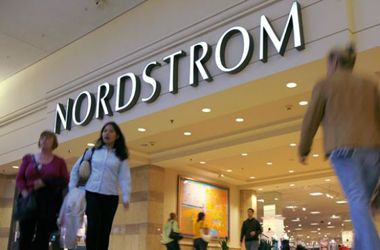October's Retail Sales Show Hints Of Economic Recovery And Solid Holiday Shopping Season

A growth in retail sales in October seem to be promising a merry holiday sales season for the retail sector and signaling that the economy is picking up despite the recent government shutdown.
October retail sales numbers released Wednesday by the U.S. Census Bureau show retail sales (excluding automobiles, gas stations and restaurants) increased 0.4 percent from September and 3.9 percent from last year, and FTI Consulting (NYSC: FCN), a global business advisory firm, forecasts a 4.9 percent increase in this season’s holiday sales.
The 0.4 percent rise in retail sales is “a very decent result at a time when the Federal government was shut down and it suggests that real consumption growth will accelerate in the fourth quarter,” Paul Dales, a senior U.S. economist for Capital Economics, said Wednesday.
October’s rise in sales equals September’s rise, which was revised down from 0.5 percent, and implies that the tax increases at the beginning of the year are well behind households, Dales said. He predicts consumption growth in the fourth quarter may be between 2.0 and 2.5 percent, which would beat the third quarter’s 1.5 percent and imply GDP’s fourth-quarter growth could also be between 2.0 and 2.5 percent. In short, retail sales are showing the economy is gaining momentum.
“Meanwhile, the acceleration in retail sales growth in October is one reason why the Fed is unlikely to be too concerned by the fall in CPI inflation to a four-year low of 1.0 percent, from 1.2 percent in September,” Dales said Thursday. The fall is largely due to a decrease in gas prices.
Kathy Bostjancic, director of macroeconomic analysis for the Conference Board, is more cautious.
"The sales performance in October is not all good news for retailers heading into the holidays, since weak wage growth implies that the personal savings rate likely dropped," Bostjancic said Wednesday. "Moreover, given the overhang of unintended inventory, consumer caution may force them to discount more than they had planned."
According to the National Retail Federation (NRF), the world’s largest retail trade association, October sales (excluding that of automobiles, gas stations and restaurants) increased 2.5 percent seasonally adjusted over September and 4.2 percent unadjusted from 2012. Electronics and appliance stores’ sales, sporting goods, hobby, book and music retail sales, and clothing and clothing accessories stores’ sales all increased about 1.5 percent from September. NRF believes that holiday sales will reach $602.1 billion this year. Holiday sales totaled $579.8 billion last year, according to NRF.
“Consumer spending is growing as we head into the holiday shopping season and the timing couldn’t be better,” NRF President and CEO Matthew Shay said. “Consumers seem to have found some sense of confidence, driven, in part, by lower gas prices. While positive gains were seen in most retail categories, retailers will continue to rely on heavy promotions to drive traffic and sales this holiday season.”
FTI’s forecast of a 4.9 percent increase in this season’s holiday sales would mean an average year by historical standards. Holiday sales growth over the past two decades since 1993 has averaged 4.8 percent, or about 3 percent factoring in inflation, according to the U.S. Census Bureau. However, Bob Duffy, global leader of the FTI's Retail & Consumer Products practice and Global Co-leader of the Corporate Finance/Restructuring segment, believes most retailers will be pleased.
"Historically, there's been a trend of resiliency in the sector, even in years of economic weakness or mild contraction, and we expect this to continue during the holiday season as retailers actively court consumers through aggressive promotions,” Duffy said.
FTI’s 2013 holiday sales report offers many explanations for the expected rise in sales. For example, despite lower discretionary spending, consumer confidence was at a high in mid-2013 until the shutdown. An online survey conducted in October by CashNetUSA found that 46 percent of Americans said they will spend less on holiday shopping than last year, with the majority (55 percent) living in the South. Two-thousand Americans over 18 participated in the survey, conducted during and closely after the government shutdown. FTI expects consumer confidence to spring back going into the holiday season.
FTI also argues a later Thanksgiving this year does not shorten the holiday sales season because early promotions have started the shopping season before Black Friday and can extend the season into January. Holiday sales in recent years have pushed into January anyway because gift cards are often redeemed then, and online sales in 2013 are increasing at nearly four times the rate of store-based sales growth, according to the U.S. Census Bureau.
"Is it possible there is a silver lining to the holiday season?" Duffy said. "Could it be that all the efforts to select amazing merchandise, to buy just the right quantities, to get product to the stores on time, to order exceptional value and to provide excellent service all while maintaining a cheery disposition might be just enough to find something in one’s holiday stocking? We believe so."
© Copyright IBTimes 2024. All rights reserved.






















